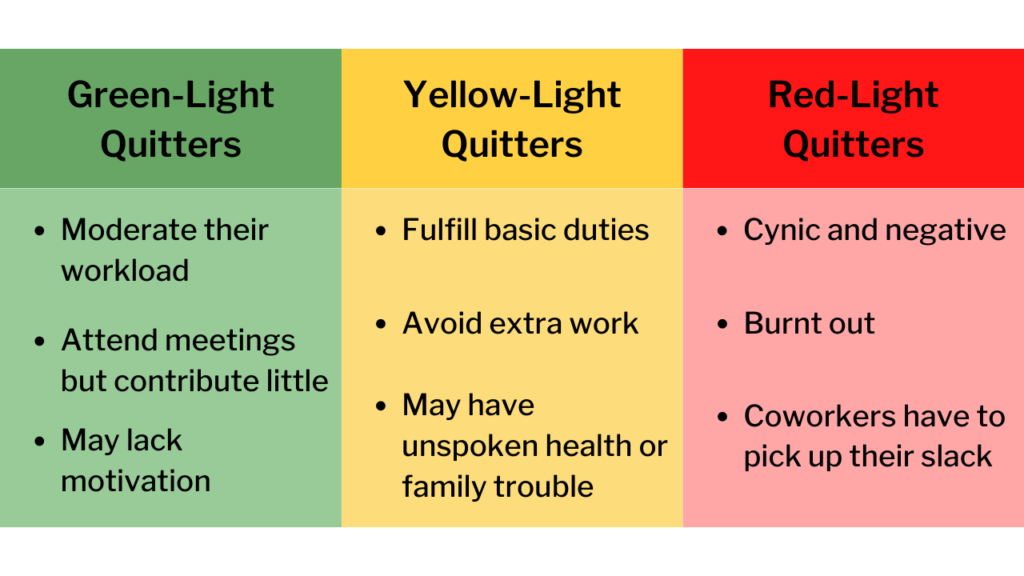Have you noticed the shift?
Not long ago, large numbers of employees were actively engaged in the fight to climb the corporate ladder. They stood out by working long hours and taking on extra projects. They weren’t afraid to compromise their personal lives and their physical and emotional well-being to show their commitment. A course correction was definitely needed, but are we seeing an overcorrection?
Nowadays, many employees are disengaging. They’re sticking to their original job description and doing nothing more. They’re isolating from their teams. They’re “putting in their time,” but not a minute more. They are part of a group called “Quiet Quitters.”
Are all quiet quitters the same? Should employers be panicked?
No.
Employers need to recognize and know how to respond to various kinds of quiet quitting. Those who are temporarily stepping back to keep a healthy balance could be termed “green-light quitters.” Those who are concerning could be termed “yellow-light quitters.” Finally, “red-light quitters” are those who have the potential of poisoning others with their attitudes of despondency.

Employers are not powerless. They are in the driver’s seat! Like an old stick-shift vehicle, they just need to know how to appropriately shift. What things might be worth stopping, slowing or yielding to, and even starting/instating at their workplaces? Regardless of the type of quiet quitter in question, employers need to take action.
Red-Light Response:
- Stop expecting more than what employees can healthfully give. Don’t expect employees to work through their lunches or long-past quitting time.
- Never assume. Make it clear you want your employees to have healthy boundaries.
Yellow-Light Response:
- Slow down enough to check in on employees frequently. If “performance reviews” have a negative connotation in your workplace, make visits less formal. Find out how your employee is doing. Learn what projects excite them and let them guide their future by allowing them to create their own goals.
- Yield to the consideration of alternative-work arrangements—flexible work hours and the option to work from home on occasion may be something an employee might need (even just temporarily) to work through any personal/home or health issues.
Green-Light Response:
- Start including employee satisfaction in your company’s list of goals.
- Roll out the kinds of incentives your employees consider the most worthwhile.
- Begin the practice of sincerely thanking employees daily for the meaningful contributions they make. Employees who feel “seen,” engage.
If employees are making a shift, employers need to know why. Once they know the “why,” it’s easier to respond. A few simple changes may save an employee and, in turn, quite possibly a team.

